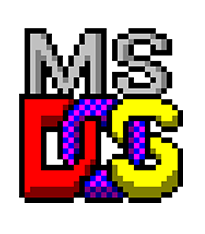How to fix a partition showing up as an MS-DOS partition
In Microsoft Windows, if a partition is incorrectly listed as an MS-DOS partition, the following tips and information may help you fix the problem.
Using a DDO or Disk Drive Overlay
A DDO (disk drive overlay) is a TSR (terminate-and-stay-resident) that loads onto sector two of the hard drive. It is used for computers that do not support LBA (large block addressing) mode and allows them to "see" larger than 520 MB. A DDO can also be used to set up a hard drive on a computer. If your computer boots from a diskette and the partitions display as MS-DOS partitions, a DDO may be present on the computer.
To find out if a DDO is present on the computer, first remove all diskettes from the computer. Then, boot the computer and see if any message appears asking you to press a key sequence, such as Ctrl+Esc, to boot from a diskette. If this message is displayed, a DDO is likely loading.
To see the partitions correctly, wait for this message and press the key sequence once asked to boot from a diskette. Once the appropriate keys are pressed, the computer prompts you to insert the bootable diskette.
Windows NT or other operating system is installed
If a partition that does not use the FAT (file allocation table) system is loaded into the computer, fdisk displays the partitions as an MS-DOS partition. Operating systems that do not apply to this rule are MS-DOS 5.0 and above, Windows 3.x, Windows 95, Windows 98, and Windows Me. If any other operating system is installed, it's likely that a different file structure is used (e.g., NTFS (NTFS file system) or HPFS (high-performance file system)).
Partition was set up as an MS-DOS partition

If a partition is set up through fdisk as an MS-DOS partition, it shows as an MS-DOS partition. If you have not set up the partition to be an MS-DOS partition, see the other possibilities.
If you have created a partition in fdisk as MS-DOS partition, use fdisk to delete that MS-DOS partition and recreate the partition as a primary partition or extended (logical) partition.
If you are currently running MS-DOS 5.0 and above, Windows 3.x, 95, 98, or Me, the partition is likely not set up as an MS-DOS partition.
A save to partition utility is present on the hard drive
If your computer is a laptop computer and using Windows 3.x, Windows 95, Windows 98, or Windows NT, your computer may be using a "save to file" utility, such as Phdisk. Phdisk saves important information when the computer goes into sleep mode or when the battery power is low. The partition is a small section of the hard drive and separate from the primary partition or extended (logical) partition containing the operating system.
If you do not have a laptop or all partitions are displayed as an MS-DOS partition, refer to another possibility.
Computer virus is on the computer
If you believe the above doesn't apply, the computer may be infected by a computer virus. If you have a virus scanner, verify it's up-to-date and scan your computer for any viruses that can be removed from the computer.
If no antivirus protection is installed or you cannot update the antivirus, we suggest deleting and recreating all partitions and then reinstalling all software.
